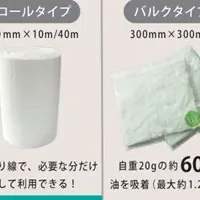
TN Nursery Reveals Eight Key Plants to Create a Monarch Butterfly Haven
In a recent effort to combat the alarming decline in monarch butterfly populations, the Tennessee Department of Transportation is generously distributing milkweed seeds, encouraging local communities to cultivate butterfly waystations. Monarch butterflies, known for their striking beauty, are increasingly threatened, and their conservation is crucial for maintaining biodiversity. In light of this initiative, TN Nursery has identified eight essential plants that can significantly contribute to the wellness of these enchanting creatures. By incorporating these plants into your garden, you can create a welcoming habitat for monarchs and other pollinators, all while enjoying a colorful and thriving outdoor space.
A charismatic perennial, Butterfly Weed features vibrant yellow flowers that not only brighten your garden but are also incredibly inviting to monarchs. This milkweed variant is vital for monarch caterpillars, providing them with essential nutrients needed for their development into butterflies. Thriving in sandy and moist conditions under full sunlight, Butterfly Weed is relatively low-maintenance. Once planted, it can withstand drought and blooms profusely during late spring and summer.
No monarch garden is complete without Milkweed—the crucial food source for monarch larvae. Monarchs exclusively rely on milkweed for their survival, making it the foundational plant for any butterfly waystation. Select from various species like Swamp Milkweed and Common Milkweed, each offering unique aesthetic appeal and habitat properties. Their fragrant flowers in pink, white, and purple attract not just butterflies but also bees, ensuring a vibrant garden.
This drought-resistant perennial is a cheerful addition, showcasing daisy-shaped blooms in shades of red, orange, and yellow. Blanket Flower thrives under full sunlight, blooms from early summer to autumn, and serves as an essential nectar source for migrating monarchs. Its resilience in poor, well-drained soil makes it an ideal choice for low-maintenance landscapes.
As a native perennial, the Purple Coneflower is a must-have for monarch-friendly gardens. Its large, purple-petaled flowers attract adult monarchs while providing a visual delight. This adaptable plant flourishes in various soil types as long as they are well-drained and is drought-tolerant, blooming from midsummer to early fall—a crucial time for migrating monarchs.
Adding texture and height to your garden, Joe Pye Weed is another pollinator favorite that features slender stems adorned with pink or mauve flowers. Monarchs adore its sweet nectar, available from midsummer through early fall. Thriving in moist, well-drained soil and tolerant of full or partial shade, this plant is an adaptable option for various garden spaces.
With its sunny yellow flowers and dark centers, the Black-Eyed Susan is a robust plant that produces abundant nectar to attract monarchs and other pollinators. Resilient to drought and adaptable to different soil types, it blooms late in summer and into fall, providing vital sustenance for migrating butterflies. Known for self-seeding, this plant ensures a continuous display of vibrant flowers each year.
Recognizable by its tall spikes of purple blooms, Blazing Star is a magnet for monarchs and other pollinators. Blooming late in summer to fall, it supplies vital nectar during the monarchs' migration. Preferring moist soils and full sun, this plant also serves a dual purpose as it repels deer, offering further protection for your butterfly waystation.
These late-blooming beauties provide essential nectar for monarchs during their extended migration journey. Asters, which come in daisy-like forms in shades of purple, blue, and white, do best in full sun and bloom from late summer through autumn, ensuring that your garden remains a pollinator haven well into winter.
When designing your monarch butterfly waystation, consider a layout that incorporates varying heights, bloom times, and diverse colors. Use native species whenever possible as they adapt well to local pollinators and are usually easier to cultivate. Avoid using pesticides that could harm monarchs and beneficial insects. Additionally, include features like shallow water sources and shaded areas created by shrubs or tall grasses to enhance the habitat.
By planting these eight recommended species, you are not only providing a sanctuary for the magnificent monarch butterfly but also initiating a vibrant, living ecosystem in your garden. This initiative is vital in the fight against their extinction and contributes to the overall health of our planet’s biodiversity.
Tammy Sons, the CEO and Founder of TN Nursery, is a horticultural expert dedicated to preserving biodiversity. With her extensive knowledge of native plant species, Tammy is a trusted voice in the gardening industry and actively promotes eco-friendly practices for thriving landscapes. For more information, visit TN Nursery's website.
1. Butterfly Weed (Asclepias tuberosa)
A charismatic perennial, Butterfly Weed features vibrant yellow flowers that not only brighten your garden but are also incredibly inviting to monarchs. This milkweed variant is vital for monarch caterpillars, providing them with essential nutrients needed for their development into butterflies. Thriving in sandy and moist conditions under full sunlight, Butterfly Weed is relatively low-maintenance. Once planted, it can withstand drought and blooms profusely during late spring and summer.
2. Milkweed (Asclepias spp.)
No monarch garden is complete without Milkweed—the crucial food source for monarch larvae. Monarchs exclusively rely on milkweed for their survival, making it the foundational plant for any butterfly waystation. Select from various species like Swamp Milkweed and Common Milkweed, each offering unique aesthetic appeal and habitat properties. Their fragrant flowers in pink, white, and purple attract not just butterflies but also bees, ensuring a vibrant garden.
3. Blanket Flower (Gaillardia spp.)
This drought-resistant perennial is a cheerful addition, showcasing daisy-shaped blooms in shades of red, orange, and yellow. Blanket Flower thrives under full sunlight, blooms from early summer to autumn, and serves as an essential nectar source for migrating monarchs. Its resilience in poor, well-drained soil makes it an ideal choice for low-maintenance landscapes.
4. Purple Coneflower (Echinacea purpurea)
As a native perennial, the Purple Coneflower is a must-have for monarch-friendly gardens. Its large, purple-petaled flowers attract adult monarchs while providing a visual delight. This adaptable plant flourishes in various soil types as long as they are well-drained and is drought-tolerant, blooming from midsummer to early fall—a crucial time for migrating monarchs.
5. Joe Pye Weed (Eutrochium spp.)
Adding texture and height to your garden, Joe Pye Weed is another pollinator favorite that features slender stems adorned with pink or mauve flowers. Monarchs adore its sweet nectar, available from midsummer through early fall. Thriving in moist, well-drained soil and tolerant of full or partial shade, this plant is an adaptable option for various garden spaces.
6. Black-Eyed Susan (Rudbeckia hirta)
With its sunny yellow flowers and dark centers, the Black-Eyed Susan is a robust plant that produces abundant nectar to attract monarchs and other pollinators. Resilient to drought and adaptable to different soil types, it blooms late in summer and into fall, providing vital sustenance for migrating butterflies. Known for self-seeding, this plant ensures a continuous display of vibrant flowers each year.
7. Blazing Star (Liatris spp.)
Recognizable by its tall spikes of purple blooms, Blazing Star is a magnet for monarchs and other pollinators. Blooming late in summer to fall, it supplies vital nectar during the monarchs' migration. Preferring moist soils and full sun, this plant also serves a dual purpose as it repels deer, offering further protection for your butterfly waystation.
8. Asters (Symphyotrichum spp.)
These late-blooming beauties provide essential nectar for monarchs during their extended migration journey. Asters, which come in daisy-like forms in shades of purple, blue, and white, do best in full sun and bloom from late summer through autumn, ensuring that your garden remains a pollinator haven well into winter.
Tips for Design and Utilization
When designing your monarch butterfly waystation, consider a layout that incorporates varying heights, bloom times, and diverse colors. Use native species whenever possible as they adapt well to local pollinators and are usually easier to cultivate. Avoid using pesticides that could harm monarchs and beneficial insects. Additionally, include features like shallow water sources and shaded areas created by shrubs or tall grasses to enhance the habitat.
By planting these eight recommended species, you are not only providing a sanctuary for the magnificent monarch butterfly but also initiating a vibrant, living ecosystem in your garden. This initiative is vital in the fight against their extinction and contributes to the overall health of our planet’s biodiversity.
About the Author
Tammy Sons, the CEO and Founder of TN Nursery, is a horticultural expert dedicated to preserving biodiversity. With her extensive knowledge of native plant species, Tammy is a trusted voice in the gardening industry and actively promotes eco-friendly practices for thriving landscapes. For more information, visit TN Nursery's website.
Topics Environment)










【About Using Articles】
You can freely use the title and article content by linking to the page where the article is posted.
※ Images cannot be used.
【About Links】
Links are free to use.